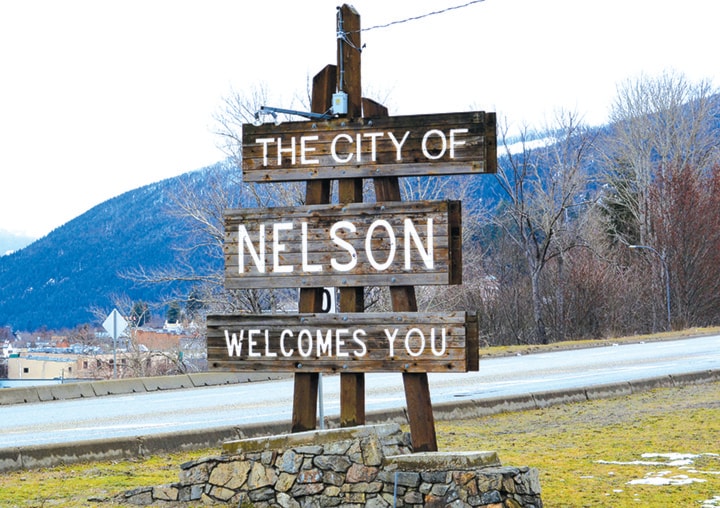Nelson was named after BC Lt.-Gov. Hugh Nelson (1830-93), but had several other names first. Earliest among them was kaia’mElEp or k’iyá’mlup. The former spelling was recorded by ethnographer James Teit, who said it was an important Sinixt First Nation camp, but gave no translation. Fellow ethnographer Verne Ray gave the latter spelling. He had no translation either but suggested it might be a Ktunaxa word.
Dorothy Kennedy and Randy Bouchard in their Lakes Indian Ethnography and History could “neither confirm nor deny this.” After the discovery of the Silver King mine, the place was called Toad Mountain, although this referred to the area around the mines (later known as Hall’s Camp and Fredericton), not the fledgling landing on Kootenay Lake.
The first mention was in the Victoria Daily Colonist of Jan. 1, 1888: “Our advices from Colville state that there is no doubt that 1,000 or 1,500 men will be at Toad Mountain as early next spring as they can get to it.” On Jan. 13, Revelstoke magistrate Gilbert Malcolm Sproat wrote in the Colonist: “Upon the southern wall of that valley, six or seven miles from the river, and situated about the [headwaters] of Forty-nine creek — a little east therefrom I think is a mountain called ‘Toad’ Mountain variously estimated as of the height of 4,000 or 5,000 feet …”
On June 2, the Colonist published a letter from E.S. Topping (the future founder of Trail) composed at “Toad Mountain, West Kootenay.” He referred to “The new camp … called by the provincial authorities by the euphonious name of Toad Mountain.”
In 1893, the Spokane Review wrote that Toad Mountain was named after “a mountain or peak that in contour resembled a toad.” This piqued the interest of the Nelson Tribune, which “has taken some trouble to find out when and why the district was named ‘Toad’ Mountain and has arrived at the conclusion that the Review is wrong.”
The Tribune’s invaluable findings appeared on March 23, 1893. The newspaper noted the first mining location on what became Toad Mountain was dated July 9, 1887. It was called the Kootenai Bonanza, and its locators were Thomas Hall, William White, and William J. Oakes. It was described as “on the divide between the heads of Cottonwood Smith and Salmon creeks, about ten miles south of the Kootenai outlet.”
The Silver King and American Flag claims were staked two days later. These and other claims staked by the Hall party of Colville were similarly described — no mention yet of the mountain’s name.
But on July 27, 1887, Ben Thomas and Charlie Townsend located a claim called the Jim Crow, described as “on the west side of Giveout creek on Toad mountain and about 1½ miles from the Silver King mineral claim.” Thomas, who was still in Nelson in 1893, said that when he and Townsend staked their claim, his partner was “sitting on a log that was about a foot from the ground, and when he had written the notice as far as the words ‘situate on,’ a big, warty toad jump from under the log so close to his feet that he could not help seeing it, and the word ‘on’ was followed by the words ‘Toad mountain.’”
Other old-timers corroborated the story (although journalist Randall Kemp disputed it) and said they were unaware of the mountain having any prior name. Subsequently, however, there were a couple of alternate names. Thomas and Townsend described the Iriquois [sic] claim, staked two days after the Jim Crow, as being “on Kootenay mountain.”
On Oct. 15, 1887, Thomas Morrow recorded a claim that he said was “four miles west of Bonanza camp, Mineral mountain, in Kootenai mining district.” Other locations that year also referred to Bonanza camp, but none were described as being on a mountain.
Several claims staked in March 1888 were described as being on “Mineral mountain.” All claims staked in 1887 were either relocated or recorded in 1888, and described as being on Mineral mountain, including the Jim Crow and Iriquois.
Apparently mining recorder Henry Anderson preferred the name Mineral mountain, but Gilbert Malcolm Sproat, by now gold commissioner for the area, “insisted on calling the district ‘Toad Mountain.’”
Sproat himself wrote in the Nelson Miner of Oct. 9, 1897: ““Toad mountain,’ however the name originated, was the common, accepted name when this section of the district was placed under my jurisdiction. Neither the government nor I ever knew, or recognized any other name. The name Mineral mountain, used in 1887 … was dropped. It was indistinctive and apparently did not compete, in the popular mind, with the other name.”
Next: Salisbury or Stanley?
